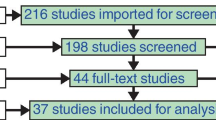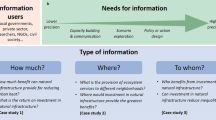Abstract
Human values are embedded in forest management decisions but are rarely systematically and explicitly included in the decision process. National legislation for public lands often provides conflicting goals but little guidance for agencies such as the U.S. Forest Service to operationalize public value preferences. The historical difficulty of integrating public values into forest management decisions includes the problems of measurement, aggregation, and tradeoff analysis. In this paper, we present a method for measuring and integrating spatially-explicit public values collected using public participation geographic information systems (PPGIS) into a decision support framework we call values compatibility analysis (VCA). We provide a case study to demonstrate how spatially-explicit public values can be used to determine the compatibility of designating ATV/OHV routes on national forest land. The applications and limitations of VCA for decision support are elaborated and we conclude that an effective decision support framework should provide some degree of standardization, be broadly inclusive, and provide the opportunity to engage in systematic place-based value trade-off analyses.




Similar content being viewed by others
References
Alessa, N., Kliskey, A., & Brown, G. (2008). Social-ecological hotspots mapping: A spatial approach for identifying coupled social-ecological space. Landscape and Urban Planning, 85(1), 27–39.
Beierle, T. (1999). Using social goals to evaluate public participation in environmental decisions. Policy Studies Review, 16, 75–103.
Bengston, D., & Xu, Z. (1995). Changing national forest values: A content analysis. USDA For. Serv. Gen. Tech. Rep. NC-323. 29 p
Beverly, J., Uto, K., Wilkes, J., & Bothwell, P. (2008). Assessing spatial attributes of forest landscape values: An internet-based participatory mapping approach. Canadian Journal of Forest Research. doi:10.1139/X07-149.
Brown, T. C. (1984). The concept of value in resource allocation. Land Economics, 60(3), 231–246.
Brown, G. (2003). A method for assessing highway qualities to integrate values in highway planning. Journal of Transport Geography, 11(4), 271–283.
Brown, G. (2005). Mapping spatial attributes in survey research for natural resource management: Methods and applications. Society and Natural Resources, 18(1), 17–39.
Brown, G. (2006). Mapping landscape values and development preferences: A method for tourism and residential development planning. International Journal of Tourism Research, 8, 101–113.
Brown, G. (2008). A theory of urban park geography. Journal of Leisure Research, 40(4), 589–607.
Brown, G. (in press). Public Participation GIS (PPGIS) for regional and environmental planning: Reflections on a decade of empirical research. URISA Journal.
Brown, G., & Raymond, C. (2007). The relationship between place attachment and landscape values: Towards mapping place attachment. Applied Geography, 27, 89–111.
Brown, G., & Reed, P. (2000). Validation of a forest values typology for use in national forest planning. Forest Science, 46(2), 240–247.
Brown, G., & Reed, P. (2009). Public participation GIS: A method for national forest planning. Forest Science, 55(2), 166–182.
Brown, G., & Weber, D. (2011). Public participation GIS: A new method for use in national park planning. Landscape and Urban Planning, 102(1), 1–15.
Brown, G., Reed, P., & Harris, C. C. (2002). Testing a place-based theory for environmental evaluation: An Alaska case study. Applied Geography, 22, 49–76.
Brown, G., Smith, C., Alessa, L., & Kliskey, A. (2004). A comparison of perceptions of biological value with scientific assessment of biological importance. Applied Geography, 24(2), 161–180.
Clement, J. M., & Cheng, A. S. (2011). Using analyses of public value orientations, attitudes and preferences to inform national forest planning in Colorado and Wyoming. Applied Geography, 31, 393–400.
Kaiser, B. (2006). The national environmental policy act’s influence on USDA forest service decision-making, 1974–1996. Journal of Forest Economics, 12(2), 109–130.
Manning, R., Valliere, W., & Minteer, B. (1999). Values, ethics, and attitudes toward national forest management: An empirical study. Society and Natural Resources, 12(5), 421–436.
Nielsen-Pincus, M. (2011). Mapping a values typology in three counties of the Interior Northwest, USA: Scale, geographic associations among values, and the use of intensity weights. Society and Natural Resources, 24(6), 535–552.
Raymond, C., & Brown, G. (2007). A spatial method for assessing resident and visitor attitudes toward tourism growth and development. Journal of Sustainable Tourism, 15(5), 520–540.
Raymond, C., and Brown, G. (2010). Assessing spatial associations between perceptions of landscape value and climate change risk for use in climate change planning. Climatic Change. Online First. Available from http://www.springerlink.com/content/100247 [Accessed 25 July 2010].
Rolston, H., & Coufal, J. (1991). A forest ethic and multivalue forest management. Journal of Forestry, 89(4), 35–40.
Roslton, H. (1988). Environmental ethics. Philadelphia: Temple University Press.
Sawicki, D., & Peterman, D. (2002). Surveying the extent of PPGIS practice in the United States. In W. J. Craig, T. M. Harris, & D. M. Weiner (Eds.), Community participation and geographic information systems (pp. 17–36). London: Taylor & Francis.
Sieber, R. (2006). Public participation geographic information systems: A literature review and framework. Annals of the Association of American Geographers, 96(3), 491–507.
Surowiecki, J. (2004). The wisdom of crowds. New York: Doubleday.
Tarrant, M. A., Cordell, H. K., & Green, G. T. (2003). PVF: A scale to measure public values of forests. Journal of Forestry, 101, 24–30.
Zhu, X., Pfueller, S., & Whitelaw, P. (2010). Spatial differentiation of landscape values in the Murray River Region of Victoria, Australia. Environmental Management, 45(5), 896–911.
Zube, E. (1987). Perceived land use patterns and landscape values. Landscape Ecology, 1(1), 37–45.
Author information
Authors and Affiliations
Corresponding author
Rights and permissions
About this article
Cite this article
Brown, G., Reed, P. Values Compatibility Analysis: Using Public Participation Geographic Information Systems (PPGIS) for Decision Support in National Forest Management. Appl. Spatial Analysis 5, 317–332 (2012). https://doi.org/10.1007/s12061-011-9072-x
Received:
Accepted:
Published:
Issue Date:
DOI: https://doi.org/10.1007/s12061-011-9072-x




